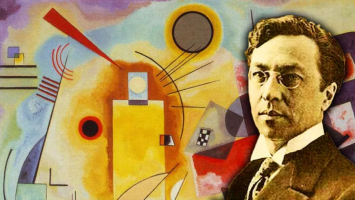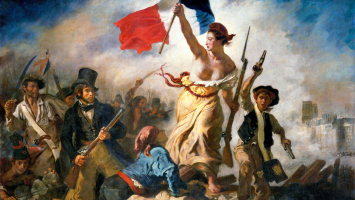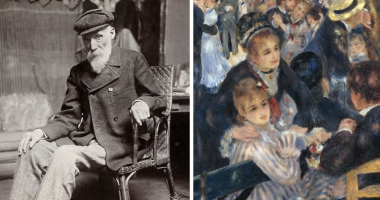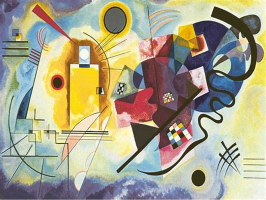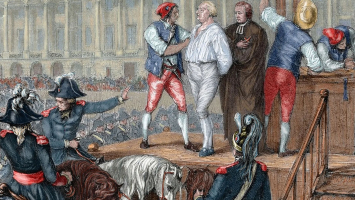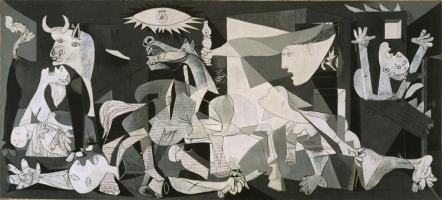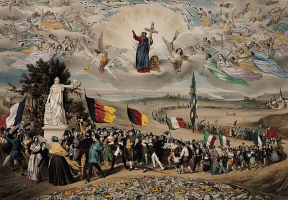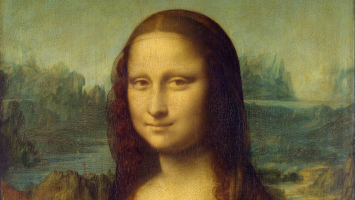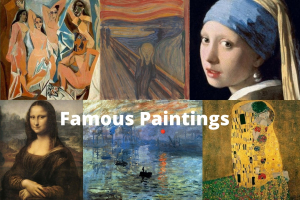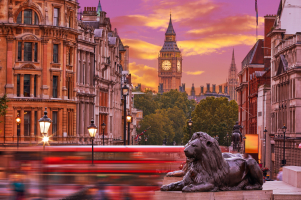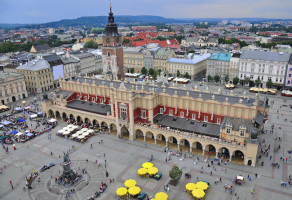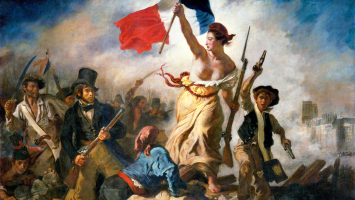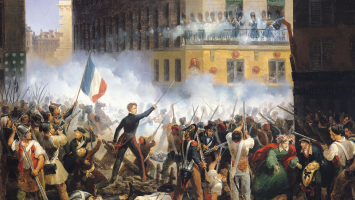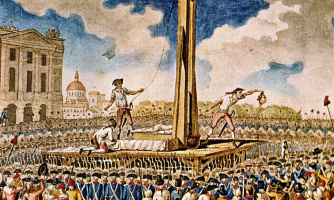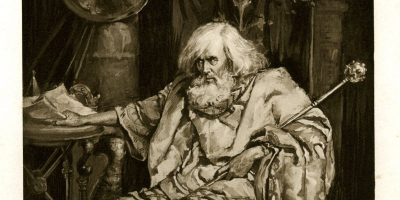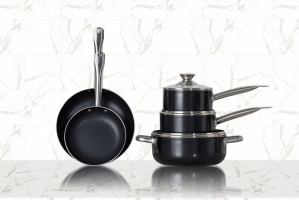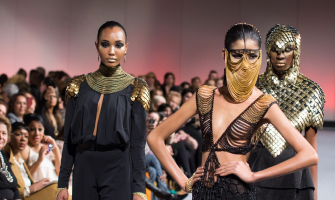Top 10 Most Famous Paintings Inspired by the French Revolution
One of the major turning points in social history is without a doubt the French Revolution. Similar to how we use social media today, painting during this ... read more...turbulent time became a means of reporting and commenting on the revolution. It also encouraged painters to experiment with new methods of expression at the same time. The French Revolution would alter not only society but also art for all time. Let's find out the top of most famous paintings inspired by the French revolution with Toplist!
-
Napoleon Crossing, often referred to as Napoleon Crossing the Alps is the St. Bernard Pass. It is an oil painting on canvas created by Jacques-Louis David, a French artist between 1801 and 1805. It is evaluated as one of the most famous paintings inspired by the French Revolution.
Napoleon is depicted in this picture galloping toward battle. To depict his godly qualities, this painting was primarily painted in golden hues.
The horse's color, which is white, symbolizes the holiness of God. This painting was created once more by several other painters using various other colors.
Four additional renditions make use of darker tones than the original artwork. All of the variants maintain Napoleon's expression. The primary goal of this artwork is to highlight Napoleon's qualities and demonstrate his stature as a powerful leader.
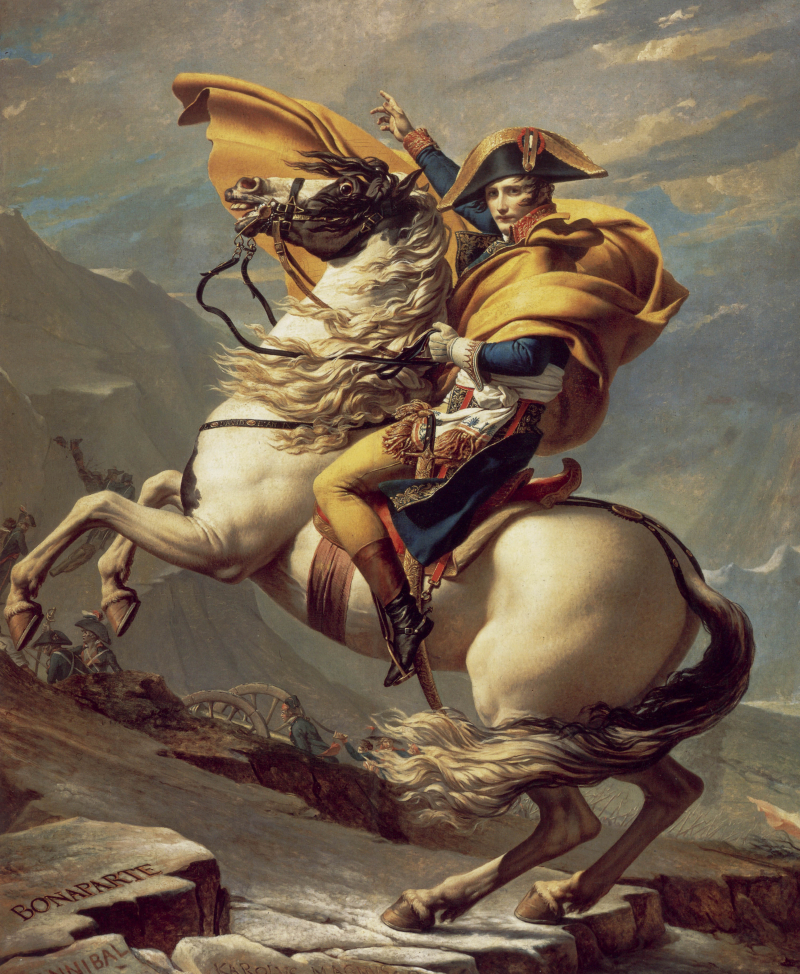
Wikipedia 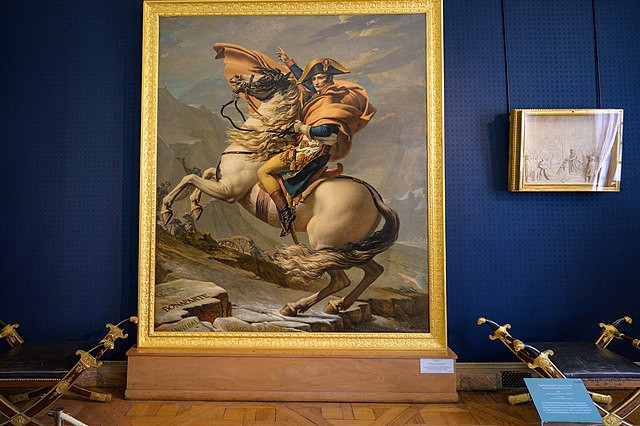
Medium -
The Consecration of Emperor Napoleon I and the coronation of Empress Josephine is how the picture Napoleon's Coronation was originally titled. It is a picture representing Napoleon's coronation at Notre-Dame de Paris that was finished in 1807 by Jacques-Louis David, the official painter of Napoleon. The oil painting is enormous, measuring just over 6 meters (20 feet) in height and nearly 10 meters (33 feet) in width. The piece is on exhibit at Paris's Louvre Museum and become one of the most famous paintings inspired by the French revolution.
The composition follows neoclassical principles and is structured around a number of axes. One axis is the vertically oriented one that runs through the cross. From the pope to the empress, a diagonal line connects them. Napoleon, who occupies the composition's center, is the subject of all gazes.
The painting originally depicted Napoleon holding the crown above his head, but later it was changed to depict Josephine being crowned by the Emperor.
Famous artwork depicts the historical scene in which Napoleon is portrayed praising his first wife, Josephine. Napoleon Bonaparte's charitable nature is intended to be depicted in this picture. Pope Pius VII is depicted in David's picture waving a hand in blessings, while Napoleon is made to appear taller by lowering the throne. French speakers refer to the picture as Le Sacre.
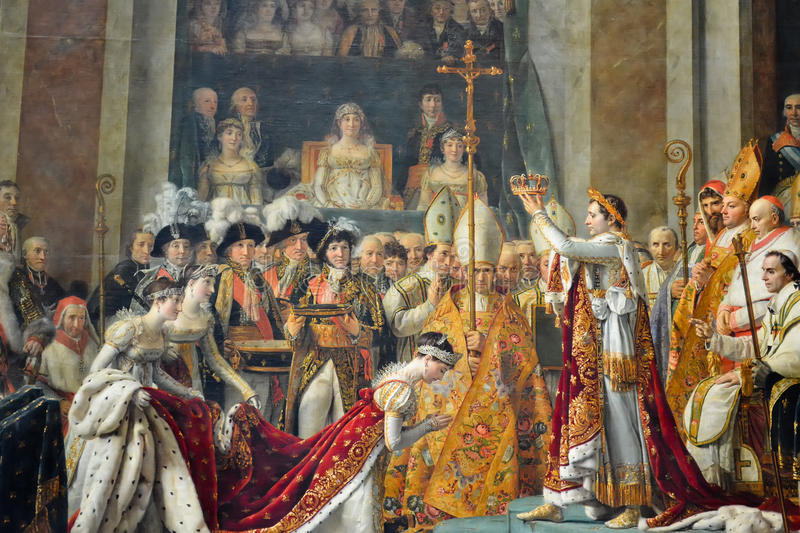
Dreamstime.com 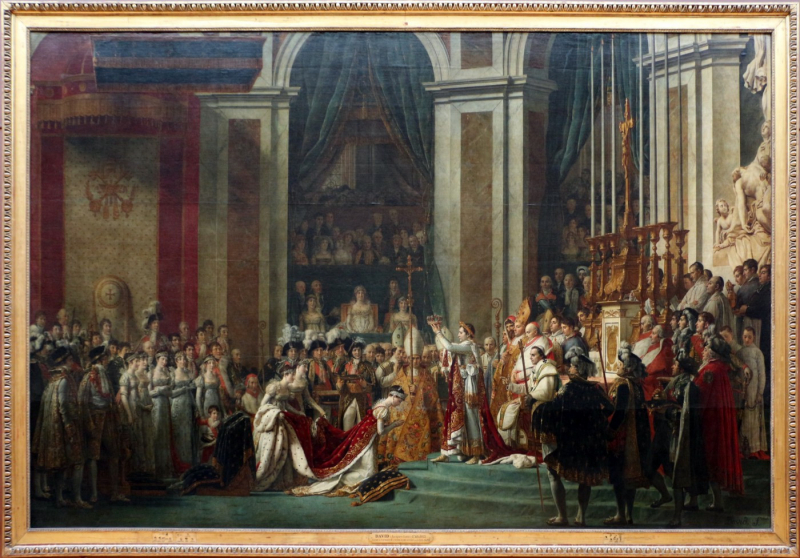
Medium -
The Storming of the Bastille was painted by Jean-Pierre Houel, a French Artist, on July 14, 1789. This picture is rated as one of the most famous paintings inspired by the French revolution.
This painting depicts the castle where the French Kings used to lock up the guilty party. The majority of them were political rebels who wanted to overthrow the government or the king.
Dark and light colors are mixed to create the hues used in the painting of the Storming of the Bastille. Due to the utilization of contrast and the ideal color balancing, the Bastille Day images can be viewed clearly.
By including the smoke and the effect of destruction, Jean-Pierre aimed to make the painting appear more realistic. Watercolors are used to accurately depict the painting's visibility. With the masterful use of light and shadow, the artist skillfully guides the viewer through the composition. By placing the dead and dying in the foreground, he highlights the ferocity and bloodshed of this early revolutionary event.
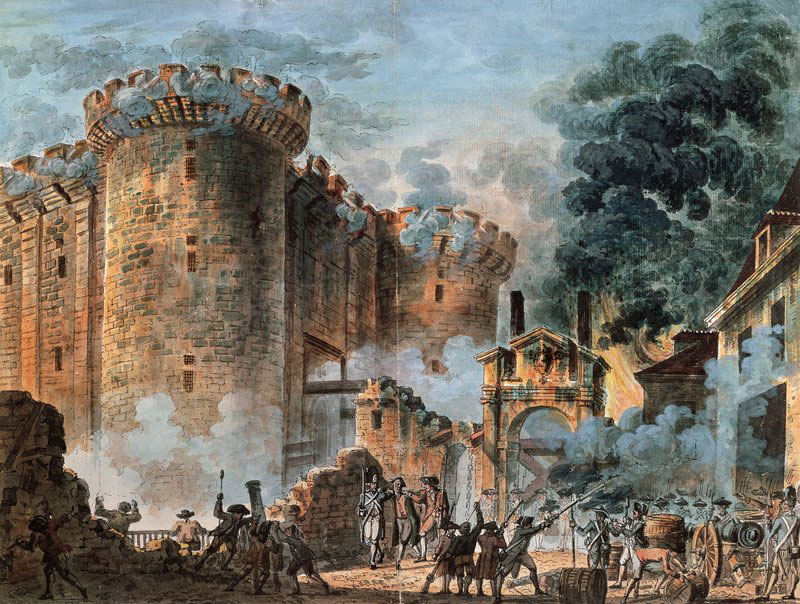
The British Library 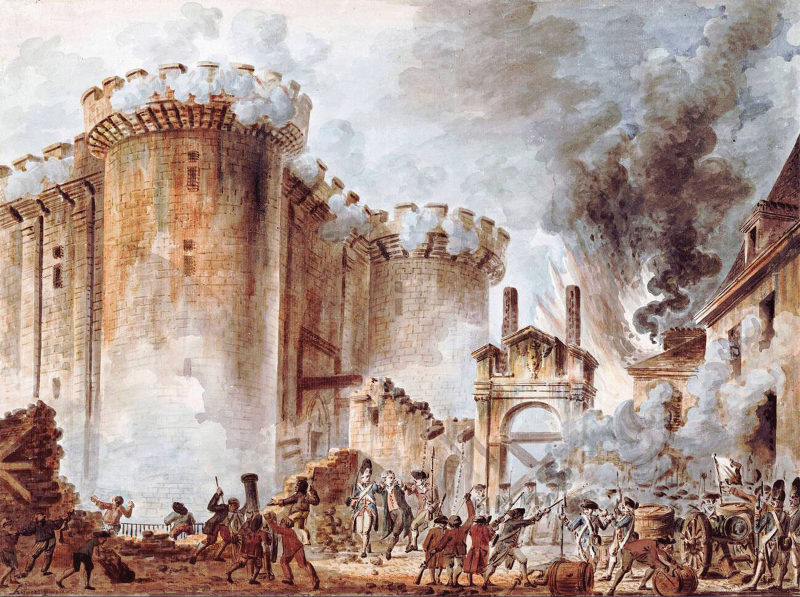
National Endowm for the Humanties -
The painting of the awakening of the third estate is painted by the artist of the French School in 1789. The Third Estate is seen in this image, which is actually a cartoon, appalled by the Nobility and Church as they threw manacles during the French Revolution. The Third Estate's Awakening depicts the Third Estate emerging from the Old Regime's Nightmare and launching an armed assault against the aristocracy.
The destroyed Bastille and heads being paraded on a pike can be seen in the backdrop of this artwork (July 14, 1789). This cartoon illustrates the social structure in France prior to the French Revolution, showing the growth of the Third Estate and the First and Second Estates' shock and dread.
It represented the rise of new social structures in which people will hold power and command. This artwork is a reflection on the reasons behind the French Revolution and the Third Estates' uprising against other estates and became one of the most famous paintings inspired by the French revolution.
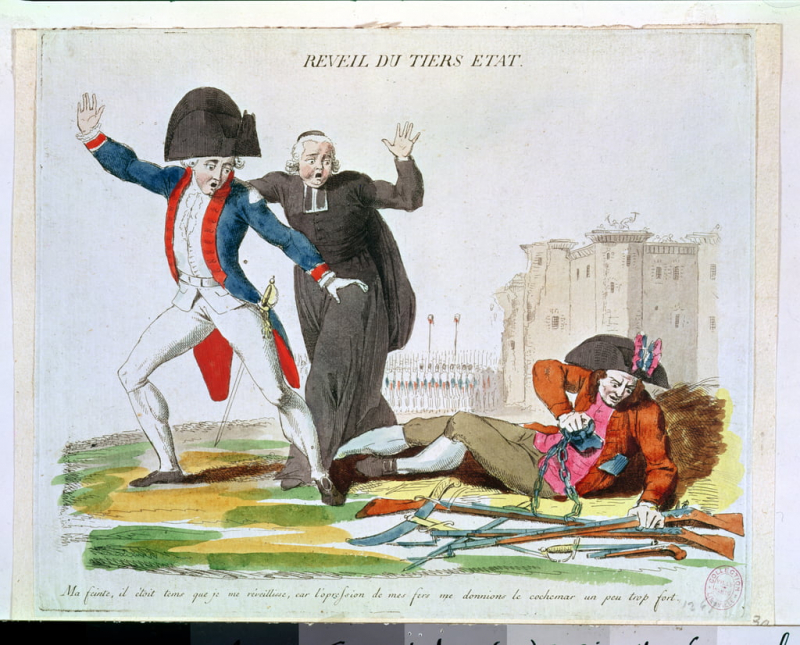
MeisterDrucke 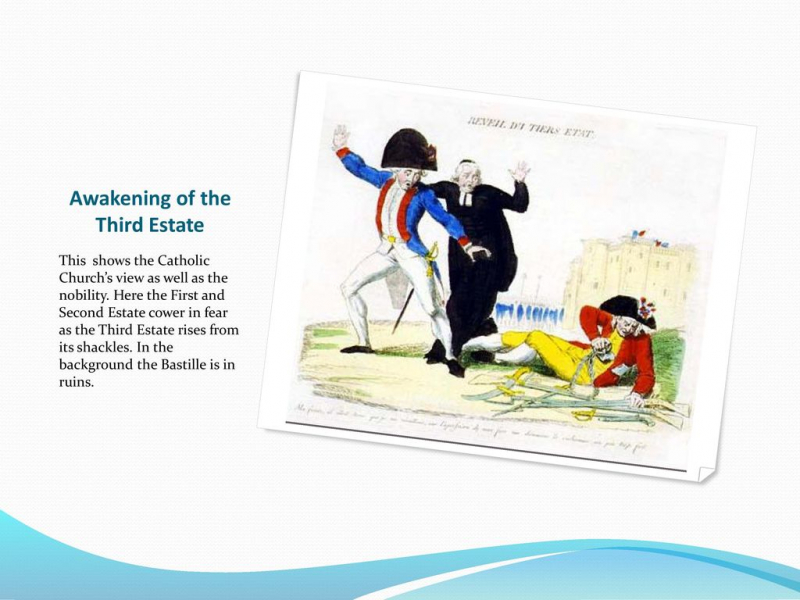
SlidePlayer -
Jacques-Louis David painted a portrait of the assassinated French revolutionary leader Jean-Paul Marat in 1793 titled The Death of Marat. As the foremost French Neoclassical painter, a Montagnard, and a member of the revolutionary Committee of General Security, David created one of the most famous paintings inspired by the French revolution.
The artwork, which was made in the months following Marat's passing, depicts Marat laying lifeless in his bathtub following his assassination on July 13, 1793, by Charlotte Corday. The first modernist work, according to art critic T. J. Clark, was David's painting because it "took the matter of politics as its material, and did not convert it."
He was in the bathtub when Charlotte Cordy fatally stabbed Marat. Marat's burial arrangements and the painting of the scene of his death were given to David. The knife and Cordy's petition represent Cordy's riches, and Marat's drooping eyelids and cocked head resemble the figure of Jesus Christ hanging on the cross.
The picture is part of the collection at Belgium's Royal Museum of Fine Arts. The artist's studio made a reproduction, which is on exhibit at the Louvre.
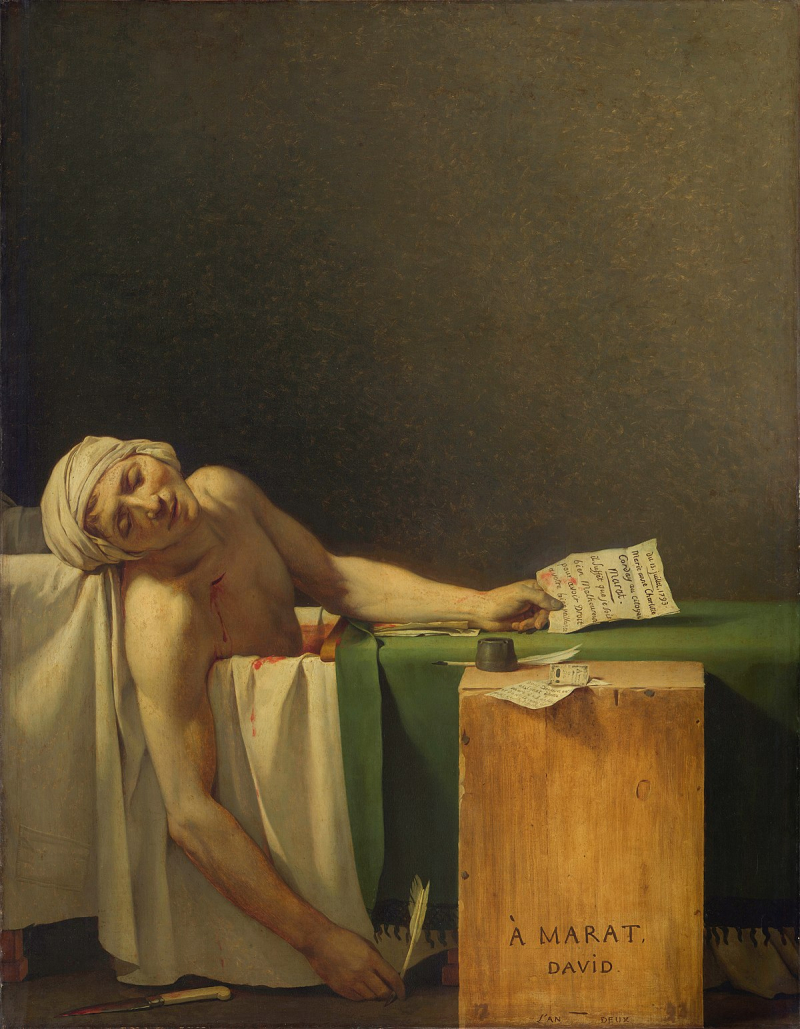
Wikipedia 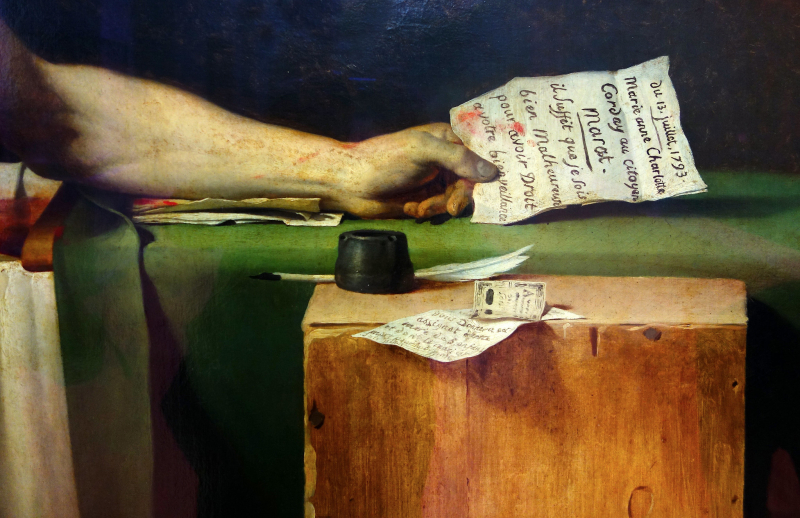
Smarthistory -
Marie-Antoinette Being Taken To Her Execution painting was displayed by William Hamilton in 1974 and was one of the most famous paintings inspired by the French revolution. Another angle on the French Revolution can be provided by an outsider. William Hamilton, a well-known British artist, felt the French Revolution to be a never-ending source of both horror and fascination. But the death of the opulent and strong queen Marie-Antoinette, who followed her executed husband after almost a year of trials, stunned him the most.
The former queen is led to her death by revolutionary soldiers in the painting, with the crown being restrained from vengeful retribution for her prior lavish lifestyle. In contrast to the men and women who are dressed in black clothing, the white-clad queen stands with a melancholy expression on her face.
The juxtaposition between the mob's wrath and Marie-dejected Antoinette's expression is maybe what makes this painting so intriguing. Despite this difference, Marie Antoinette isn't depicted in Hamilton's painting as a saint, and her guards and troops aren't necessarily the embodiment of insurmountable evil either. In a peculiar sense, Hamilton's picture depicts the forces driving the revolution.
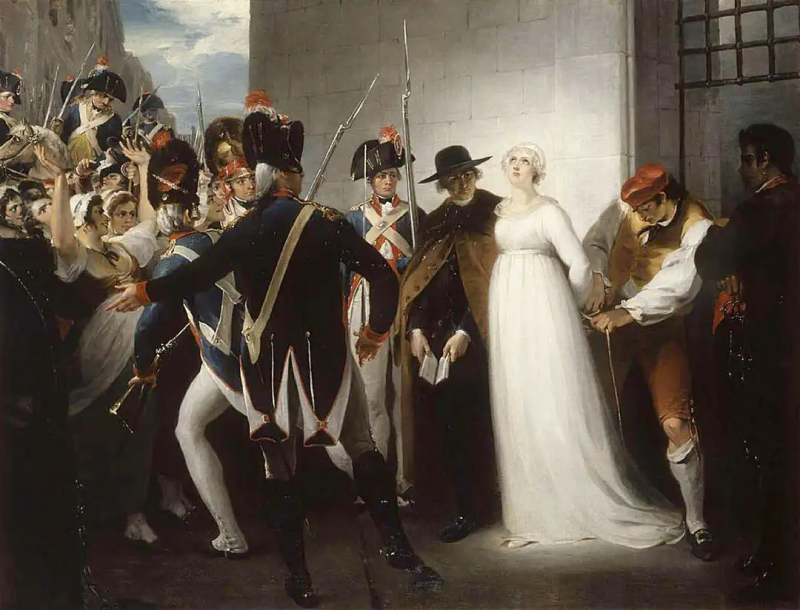
Thecollector.com 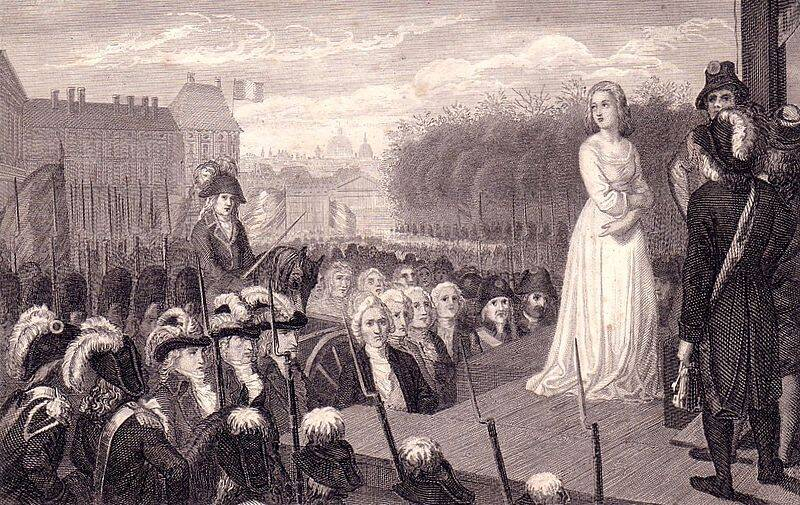
All that interesting -
Eugene Delacroix’s French liberty painting is one of the most famous paintings inspired by the French Revolution. Delacroix was more directly influenced by the July Revolution of 1830 in Liberty Leading the People, but this does not imply that there is no connection. The picture is recognized as one of the best examples of the Romanticist movement and represents a culmination of David, Robert, and other artists' early Romantic experiments after the end of the revolution.
This painting depicts a woman leading a group of people while wearing a Phrygian cap that represents Liberty as they pass over fallen victims' bodies and barriers. She is brandishing a tricolor flag—the banner of the French Revolution—with one hand and waving a weapon in the other.
Leaders come and go, but ideals endure thanks to the personification of liberty in the picture. As a collective representation of everyone who had died in the fight for freedom, she marches over bodies. Delacroix uses the fact that she is surrounded by revolutionaries from various socioeconomic backgrounds to emphasize the importance of working together when establishing a new country.
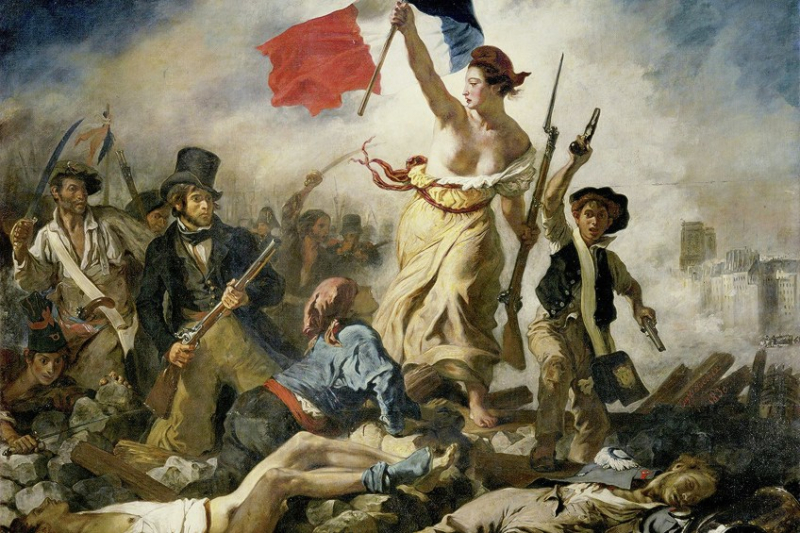
Art in Context 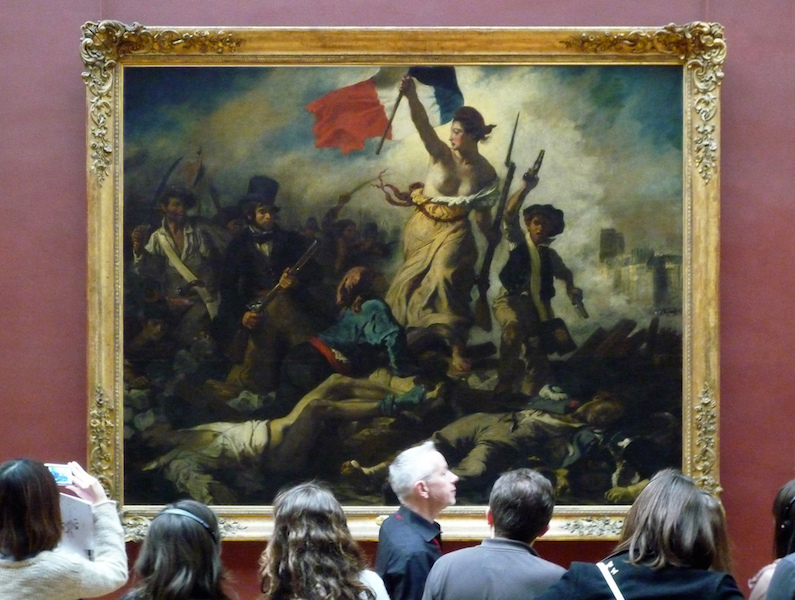
Khan Academy -
Demolition of the Château of Meudon, a landscape painting by Hubert Robert in 1806 is one of the most famous paintings inspired by the French revolution. More than ten years prior to composition, Demolition of the Chateau Meudon shows a scenario from the revolution. The Ancien Regime's royal house, Chateau Meudon, was looted during the revolution.
Since Robert had lived in Rome, he was knowledgeable about capriccio's paintings. The architectural painting style known as Capricci combines fact and fantasy for emotional effect. In order to represent a moment frozen in time, the artist has included elements of the landscape that are no longer present in this image.
In order to convey the chateau's past significance, he gives it enormous dimensions and dazzling light, throwing a shadow over the different players involved in its destruction. The neoclassical technique is used to provide a distinct axis for the picture in the chateau's dominant position, while Romanticism is apparent in the artist's evocation of emotion through the fictional remembrance of a lost moment.
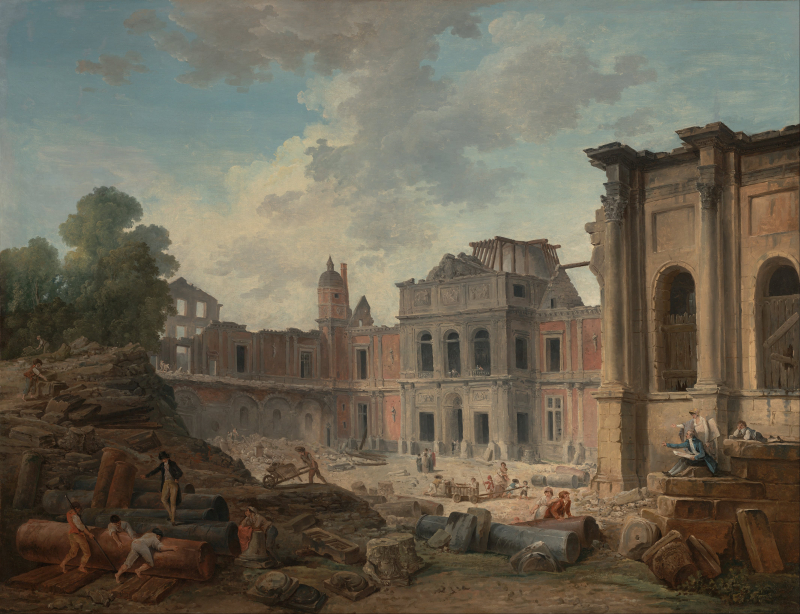
Wikipedia Commons 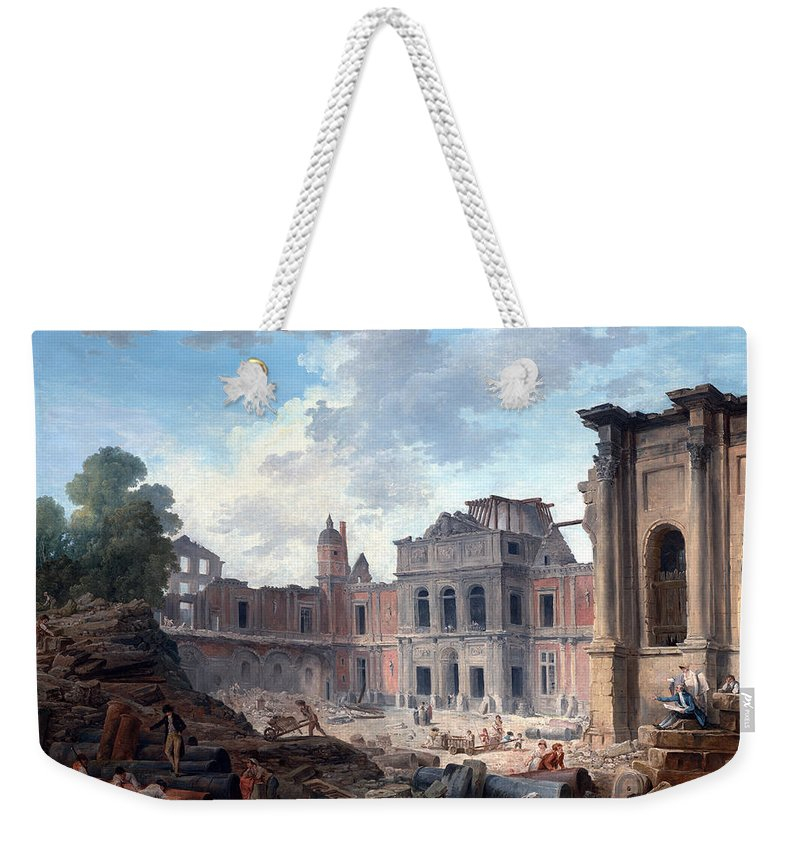
Pixels -
Without taking into account Jacques-Louis David, the French Revolution is difficult to explain. His art gives unmatched insight and is inextricably political, making him a pivotal player in the revolution. The Lictors Bring to Brutus the Bodies of His Sons is produced in 1789 and rated one of the most famous paintings inspired by the French revolution.
The painting shows Brutus and his family after the passing of his two sons. To preserve the Roman Republic, Brutus gave the order to kill them in an act of civic self-sacrifice. When the French Revolution first began, this theme was significant, and David's work was very well-liked. Although it was first turned down by the Salon, public outcry led to its display.
It serves as an example of how the old and new worlds, or monarchy and republic, are in conflict. The use of cool, dark colors and the morally conscientious distribution of light distinguish the picture as being Neoclassical. While his wife and daughters tremble in the light at the horror, Brutus sits by himself in the shadows. Although his choice has made him feel alone and unhappy, the republican statue to the left shows how valuable his sacrifice was. The brushstrokes are hardly noticeable, like in typical Neoclassical artwork, creating a fluid and dynamic image.
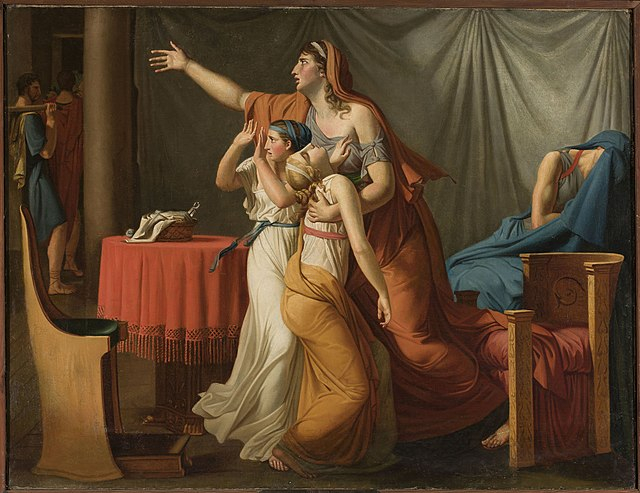
Wikidata 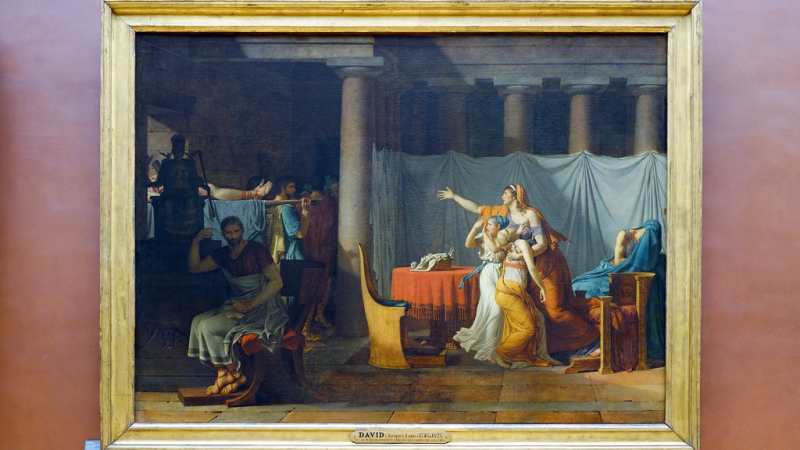
Flikr -
The Declaration of the Rights of Man and Citizen was painted by the artist Le Barbier in 1789. The image represents the rights to liberty, property, equality, etc., which are enshrined in the current French Constitution. An illustration of this pro-revolutionary change is the Declaration of the Rights of Man and of the Citizen which is regarded as one of the most famous paintings inspired by the French revolution.
The painting was widely advertised and disseminated as a poster throughout France, especially with the suggestion that these be hung up in family homes. However, just because it was well-liked and frequently copied doesn't imply Le Barbier didn't apply his inventiveness to it.
The French Revolution's emblem, Marianne, breaks free of her bonds as a foresightful light shines over the tablet and casts a forward-looking gaze. The Declaration of Human Rights, and thus, France's future, are then blessed by the angel on the tablet's other end.
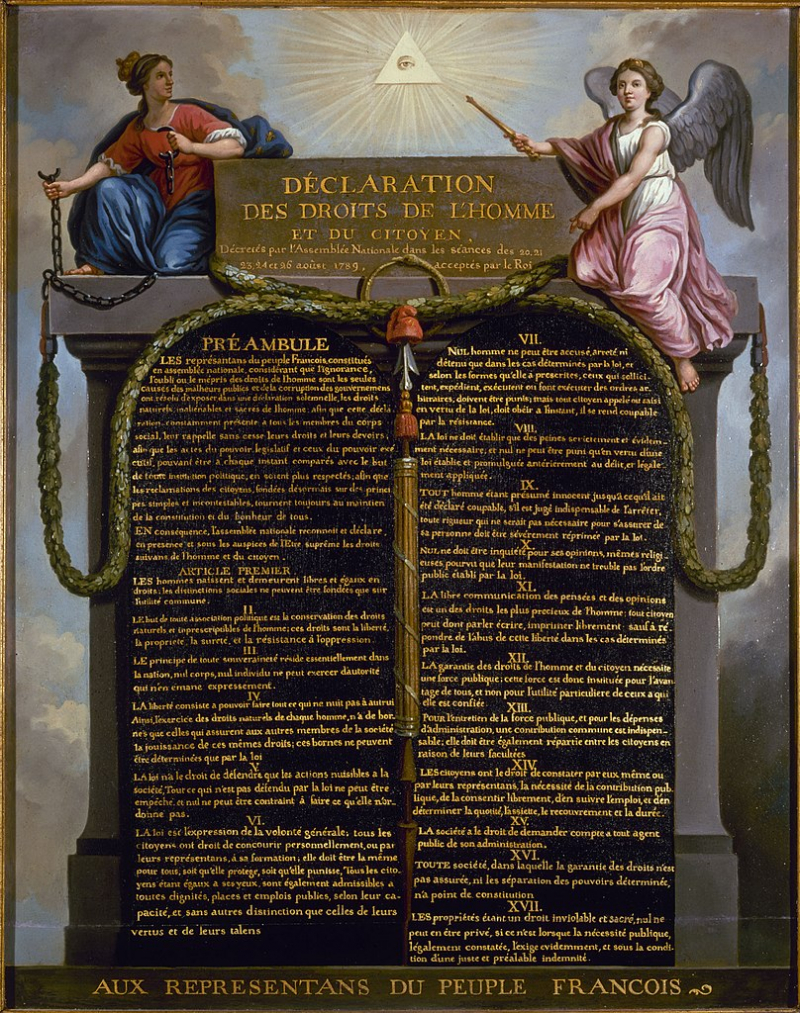
Wikipedia Commons 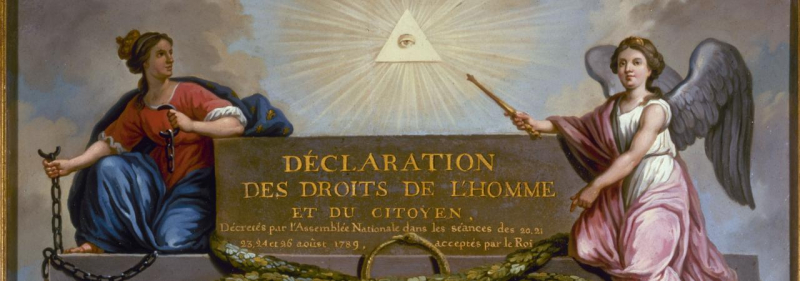
American Battlefield trust












